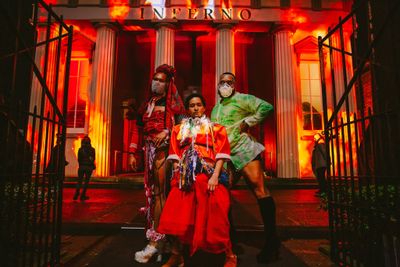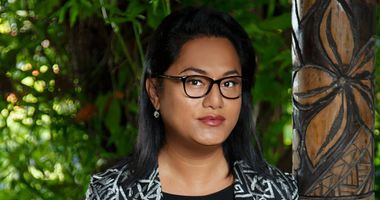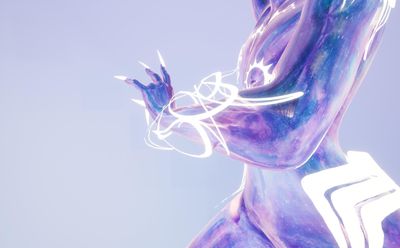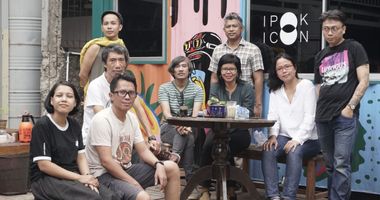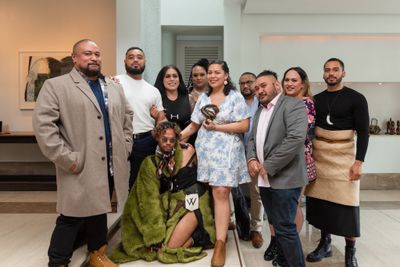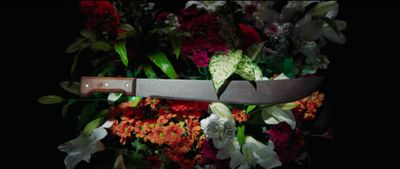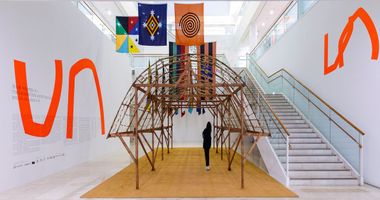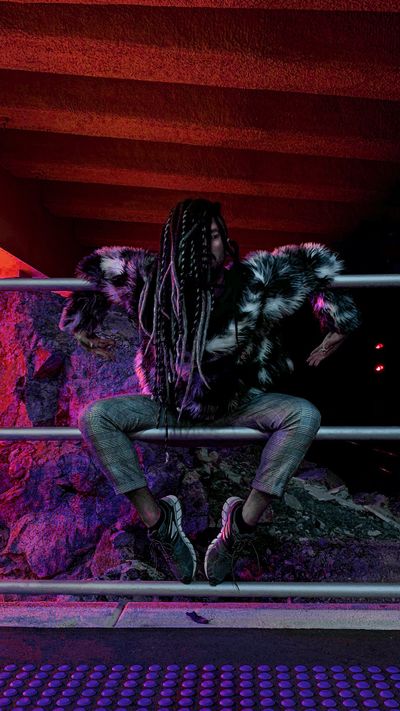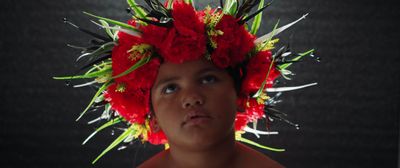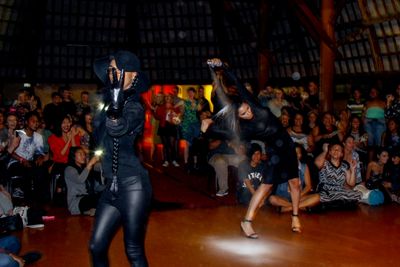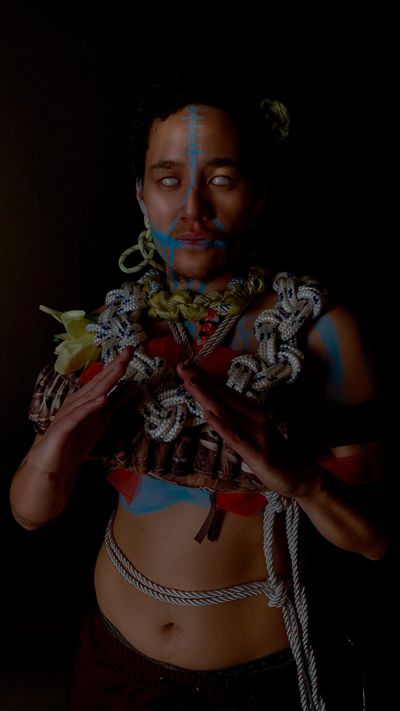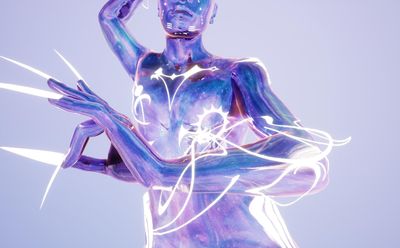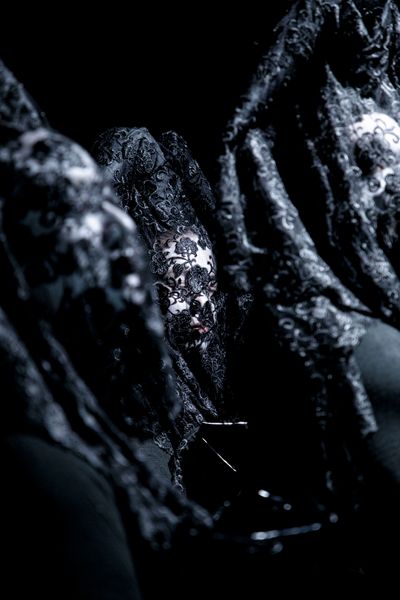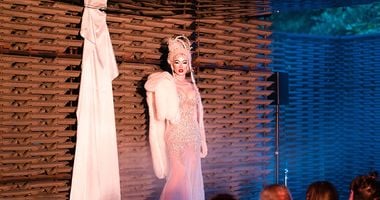FAFSWAG on Queer Representation and documenta fifteen
Pati Solomona Tyrell. Courtesy documenta fifteen.
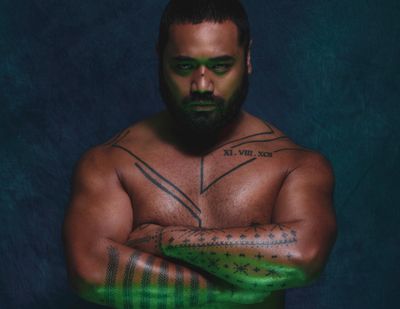
Pati Solomona Tyrell. Courtesy documenta fifteen.
For close to ten years, the FAFSWAG collective of queer and P.O.C. artists based in South Auckland, New Zealand, has been busy generating the kind of buzz any independent practitioner would kill to have. Speaking to the best kind of group dynamic, the collective's output has been diverse, with a heady rotation of members spread across projects.
Co-founding members Pati Solomona Tyrell and Tanu Gago, both visual artists of still and moving image, have made their independent marks—Tyrell being the youngest nominee of the 2018 Walters Prize, and Gago taking home a Queen's Merit of Honour for serving the Pasifika L.G.B.T.Q.I.A.+ communities that remain the collective's remit.
Primed for empowering the region's queer youth, many of whom are Pacific Islanders, the collective's very name points to its cause—a cunning hybrid of fa'afafine (in the manner of a woman) and 'fag swag'. The former is a third-gender identity from Samoan culture and an example of gender fluidity that lies outside traditional binaries. The latter, according to Urban Dictionary, points to the physical markers of homosexuality, or the 'swagger of a faggot'.
Read together, and you get a sense of the collective's work, including its irony, rage, and knowing rebelliousness. One that appears to seek a loud and queer joy and a right to their lives and bodies despite the conservatism of their Pacific milieus and settler cultures that have shaped South Auckland, not to say New Zealand.
For example, Gago's photography and audio exhibition SAVAGE IN THE GARDEN (The Physics Room, 2019), explored an Eden-like pastoral, in which queer Pacific Island men were given space to discuss their experiences with masculinity. The exhibition included recordings from the public domain, interviews, and a selection of essays.
Likewise, Tyrell's recent show Oracles (with Australian artist Christian Thompson, City Gallery Wellington, 2020) imagined the queer body as a type of Delphi seer, whispering prophecy into stale, heteronormative infrastructures. Excitingly, the show included Fafswag: The Interactive Documentary (2018), a collaboration with Taika Waititi's production company Piki Films.
Essentially a video game, the 'interactive documentary' allows users to pick two dancers to vogue-battle at a select Auckland location. The collaboration reflects the collective's willingness to experiment and embrace multimedia expansion. Importantly, it documents what the collective is arguably best known for in South Auckland—the Legacy Vogue Ball.
Since 2015, FAFSWAG had been hosting Vogue Balls between South and Central Auckland, bringing New York City ballroom culture home, to a new generation. Ballroom culture is comprised of competitive catwalks along which performers dance in the style of 'voguing'. Participants are judged in different categories, but across the board, artifice and costumed spectacle are valued most highly.
Made famous by the 1990 documentary Paris Is Burning, ballroom culture began in impoverished Black communities in New York City and has since become synonymous with a gilded style of queer resistance.
The success and impact of FAFSWAG's ballroom events in Auckland cannot be understated; a 2016 Vice documentary profiled some of the collective's key performers, and offered insight into their shared regional background and individual motivations.
The documentary conveyed a common vision born from necessity, in which the marginalised identities that comprise their South Auckland communities found sovereignty through the arts, usurping demeaning profiling with more authentic and empowering representations.
Representation and diversity as words are often thrown around these days, especially in popular entertainment. But for Gago Tyrell and the collective, the intent seems to be earnest, from the lived realities of being P.O.C. and queer and navigating the socio-economic disadvantages commonly associated with South Auckland.
Now poised to show new work at documenta fifteen in Kassel, Germany (18 June–25 September 2022), the collective prepares to share their ecstatic homegrown vision with international audiences. For the occasion, I sat down with co-founder and member Pati Solomona Tyrell to discuss their anticipation, their trepidation, and the challenges of creating their largest collaboration to date.
STKHow did this opportunity to show at documenta fifteen come up for you?
PSTruangrupa, which is another artist collective directing this year's documenta, decided the artists for this year. It's a massive group of collectives from all over the world, and I think it's the first time the majority of artists involved in documenta are collectives.
STKAre you good friends with ruangrupa? Did you know them before?
PSTNot really, they know our work from seeing us online.
STKThis isn't the first time FAFSWAG has engaged with overseas audiences. What has that engagement looked like to date, and do you think documenta will be different?
PSTMost of our practice is community engagement, so whenever we have gigs overseas, it's about connecting with similar communities: queer communities, P.O.C. communities, Pacific communities—making that network and sharing our experiences. It gives us the chance to explore these differences. It's exciting to create that kind of international community.
STKDo you feel there's been a warm reception of FAFSWAG in this process of global community making?
PSTDefinitely. But I don't think it's anything new, we just bring a different perspective; people from New Zealand have different experiences than those in Europe and the Americas. I don't think we've ever had a negative experience. At least, not to our faces. [laughs]
STKDo you feel like you are more celebrated overseas?
PSTI don't think so. There's a FAFSWAG that's known online and is different from what our local South Auckland and queer communities know. I feel like we are probably more celebrated by locals there and not necessarily the wider New Zealand art scene.
STKDo you feel like the high profile of an exhibition like documenta could be a plateau moment for FAFSWAG, a 'where to from here?' kind of vibe?
PSTPersonally, I wouldn't hold documenta in such high regard. Don't get me wrong, it will look great to have on record, and it's definitely a high point. But on that, there's a distinction between FAFSWAG's collective aims and my personal practice.
FAFSWAG has been going through a shift about who we are and where we want to steer our movement. As you might have noticed, we are moving away from the ballroom scene and live performance, partly influenced by Covid-19, towards a film collective, with film and digital art as focus.
documenta can be a platform for our new moving-image works; we can meet international curators and people from institutions around the world there, which can open doors for us. It also feels crucial to show there in times of Covid-nudged transformation.
But will documenta connect us to a community that's important to me, personally? Probably not. In my practice, I definitely make work for Pacific and queer audiences, so we'll see how that translates in Kassel, Germany.
STKHas FAFSWAG always intended to work beyond the ballroom?
PSTFunnily enough, FAFSWAG started in the visual arts and there are many visual artists within the collective spread across mediums. Our very first event was a queer exhibition as part of Pride at the Pitt Street Uniting Church in Sydney. We did workshops and events after that at Fresh Gallery in Ōtara.
We haven't done anything ballroom in a while; the community eventually learned to run their own events and we weren't needed anymore. We were facilitating—which is great—we're still present in the scene, but not in the same capacity or as a collective.
STKIs there a misconception of ballroom being the collective's focus, which you're pushing against?
PSTNot really. I don't leave my local community much, and most people I speak with know what we do as a collective and our history. Sometimes, people come up to us and say, 'Can you do some fafswagging for us?' There are people who think voguing is called fafswagging!
It's definitely there, this ballroom impression of FAFSWAG.
STKSo this renewed emphasis on visual arts is more a return for the collective?
PSTVisual arts has been the main medium for at least 11 of our members, so I wouldn't call it a shift. There are two views of FAFSWAG—our online presence, which most people affiliate with ballroom, and the grassroots community projects where we began, which actually leads to ballroom, something we did because our communities needed it.
STKCan you describe some of the work you'll be showing at documenta? Are there individual pieces, or was everything made collaboratively?
PSTThere will be three works going over. The first is like an archival exhibition with works from 2013 to now, from all the artists—it looks like moving image and a lot of portraiture. There are about 50 or 60 images from Pacific and queer artists; it was a hard selection from a massive catalogue to represent that timespan.
Our second site includes A.R. (augmented reality) sculpture, for which we had some major help from outside collaborators. The sculpture is a kind of representation of Te Kore, and that specific work was launched at Sundance Film Festival earlier this year.
The third work, a moving-image work, is the bigger collaboration and maybe the first time the entire collective has worked collaboratively. I'm not gonna lie, it was a test. We've collaborated in smaller groups before, but never with 11 or so different people, all with their own ideas. It was a task, but we finally got there, and we're launching it at documenta.
STKThat A.R. sculpture sounds fascinating. Is this a direction you'll be heading in?
PSTDefinitely. Many of our artists are trying to get into that space and use newer tools and technologies. They're evolving so quickly, and keeping up—feels pretty crazy. Portraiture is something Pacific people, and Māori specifically, have an interesting history with, as former subjects for decidedly settler compositions.
STKDid you chose to include archival portraiture to make the work more accessible to European audiences?
PSTNot really. Much of our work from the last year has been portraiture and three of the main image-makers in our team are photographers. They and myself have been at the forefront of creating a forward-facing image for FAFSWAG over the last seven years or so. Portraiture just happened to be the type of work we wanted to do by consensus.
We did so much commercial material through our events—we were like our own little marketing team. There's something about being under-resourced and trying to make with whatever you have; those kinds of limitations can push you to be more creative. We were recently going through the archives looking at our house, and seeing what we did to make things work was crazy!
My personal practice is definitely about some of those things—using a medium that is usually used to celebrate and elevate Western European cultures and then doing the same thing with the same tools for my people.
STKFor your third site at documenta, is there behind-the-scenes footage of the collective making collaboratively, which, as you say, is something of a first?
PSTYes, we got help documenting the process, it'll probably sit in the archives. That's the other thing about how people see FAFSWAG online versus the reality. Someone came over once and asked, 'Oh is this where you live?' and I said yes, and they said, 'Based on your art and presence I'd imagined something fancier.'
STKI hope you guys can get over to Kassel with the work.
PSTSame. It's just so different being in the space, with people reacting to your work, and to talk with them. We were meant to go to Germany in 2020 with a performance work, but Covid-19 stopped that. We had plans to connect with the queer community there too, and that's what I'm the most excited about if we do get over. —[O]



